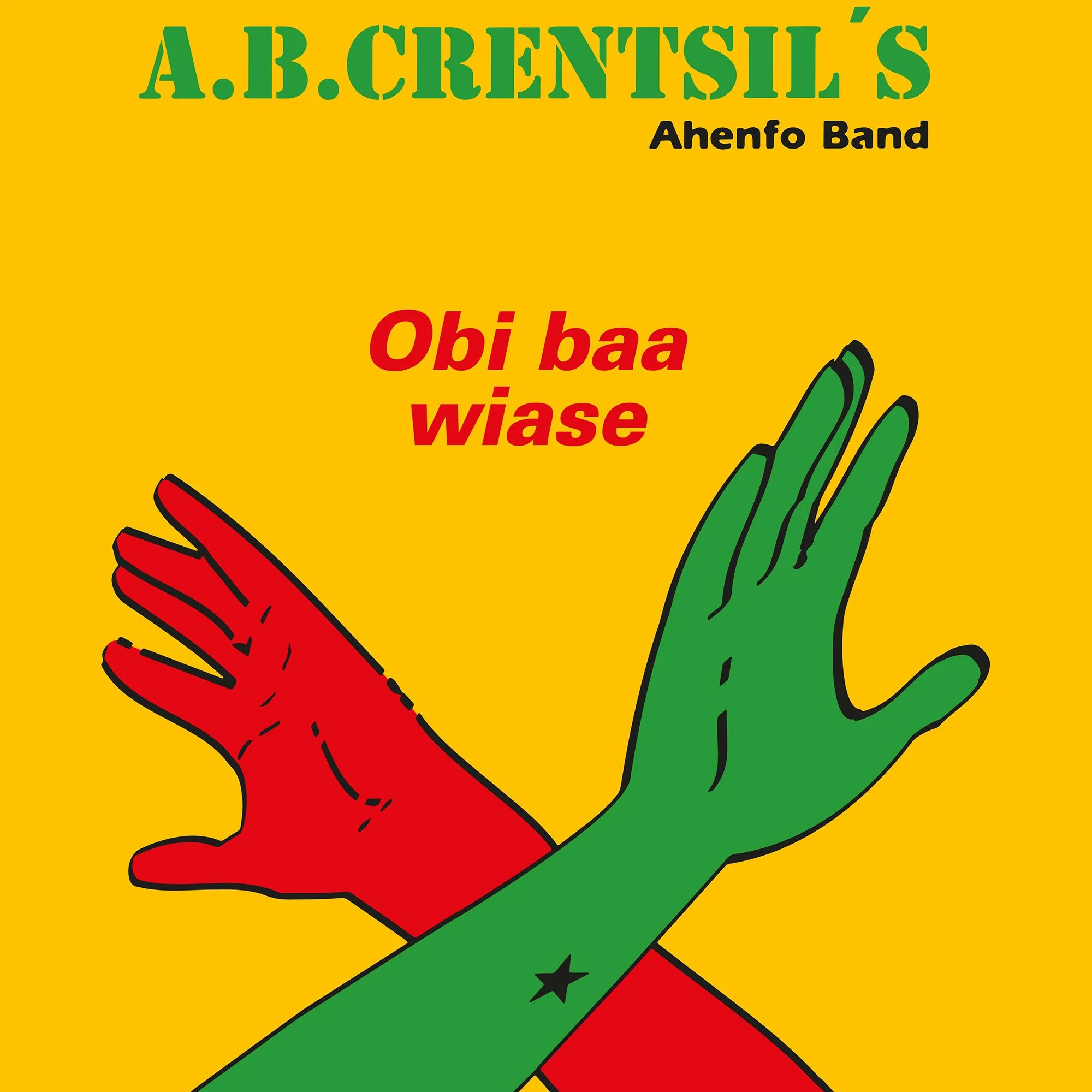-

N'draman Blintch - Cosmic Sounds (Lp - 2018)
Cosmic Sounds” is many things: Psychedelic, politically engaged, funky to death, full of synths, with an artwork to die for, a perfect crossover of African and Western culture. Music for the body and soul. Cosmic disco before the genre even existed. (The genre was born the year this record was released). Did Dj Danielle Baldelli hear it? Was it ever played by Larry Levan or Mancuso?
-

Max Rambhojan (12" - 2019)
Guadeloupe, 1986. The football World Cup has all the islanders' eyes riveted to their TV sets. At every half time breaks, local TV channel RFO broadcasts a zouk promo on repeat: ‘’Tou’t Jou Pa Min’m". Max Rambhojan, the local singer responsible for this monster tune, has arrived.
-

Ismaïl & Sixu Touré - Mandinka Dong (LP - 2019)
Released in 1979, self-financed by loans from friends and allies, Mandinka Dong - The Mandinke Dance - is the genesis of Touré Kunda, the cornerstone of the band’s unique sound, at the crossroads of Disco, Funk, Pop, Reggae, Portuguese, Guinean, Cuban, Zairean, Mandinke and Soninke music.
-

Gülistan - Oriental Groove (Lp - 2019)
In the summer of 1986, inspired by gypsies from Turkey and the Balkan region, a Kurdish immigrant and six Austrian musicians locked themselves in a small rehearsal room in Vienna's 5th district. What came out of these sessions sounded rather unusual for the local music scene.
-

Heerlens Percussie Ensemble - Biologic Music (LP - 2020)
Recorded in a school over two days back in 1986, Biologic Music of sees masters of their craft exploring uncharted territories, using vibraphones, bells, marimbas, electronic drums, balafons and tibetan prayer wheels, among others. Mixing Jazz, Latin, African, Brazilian, Modern, and Minimal music, the ensemble's penchant for fusion, improvisation and program music, lead them to create a deeply mesmerizing and timeless album.
-

Meliza (LP - 2020)
After years of compulsive listening, fantasising about its story, and tracking down the people who made it, it is a treat to finally share this well-kept secret amongst Caribbean music lovers in its entirety. Composed, written and arranged by esteemed producer Alex Dorothée, this eponymous solo album of an amateur singer hailing from Guadeloupe island was recorded in 1984 in Paris. A Lo-fi, synth-heavy gem that is hard to categorise: Is it early Zouk? Biguine? Kadans? Calypso?
-

José Carlos Schwarz & Le Cobiana Djazz - Lua Ki Di Nos (LP - 2021)
In the beginning of the 1970’s, Guinea-Bissau was a country broken up into many ethnic groups and at the heart of a war for independence. By reviving traditional musical genres as Gumbé and singing in guinean Kriol, José Carlos Schwarz & Cobiana Djazz established an immediate affective bond with their audiences. Through its music and the politically engaged spirit of its lyrics, the band played a significant role in shaping the social and political consciousness of the masses. Giving back a deep sense of cultural identity to bissau-guineans.
-

Teddy Lasry - Funky Ghost 1975-1987 (LP 2021)
French multi-instrumentalist Teddy Lasry’s story is noteworthy not just in regards to the music he released, but the manner in which he approached the craft of composing and experimenting with sounds and sonics. Pulled together in close collaboration with Teddy and his family, this collection of songs looks to introduce new listeners to his work and we are proud to present this limited and carefully remastered compilation on vinyl, including extensive liner notes.
-

A.B.Crentsil's Ahenfo Band - Obi Baa Wiase (10" - 2022)
A.B. Crentsil is one of the heavyweights of Highlife music and the main vocalist of Sweet Talks, one of the most popular Ghanaian bands of the 1970’s. In 1992, musician Charles Amoah and producer Richie Osei Kuffour offered him the opportunity to explore a new popular sound: Bürger Highlife. Little did he know these studio sessions would give birth to the biggest song of his career.
-

Wagadu Grooves: The Hypnotic Sound of Camara 1987-2016 (2LP 2024)
The Soninke collective consciousness finds its origins in a founding myth, a blood pact: the legend of Biida and the decadence of the empire of Ghana or Wagadu (evoked by Léopold Sédar Senghor as a land of plenty in his poem Le Kaya Magan). From the 3rd century AD, gathered in the region of Sahel, on the edge of the Sahara desert, the Soninko ruled over their kingdom and its capital Kumbi Saleh. According to folklore, they were blessed with abundant rain and nuggets of gold could be picked directly from the ground…
